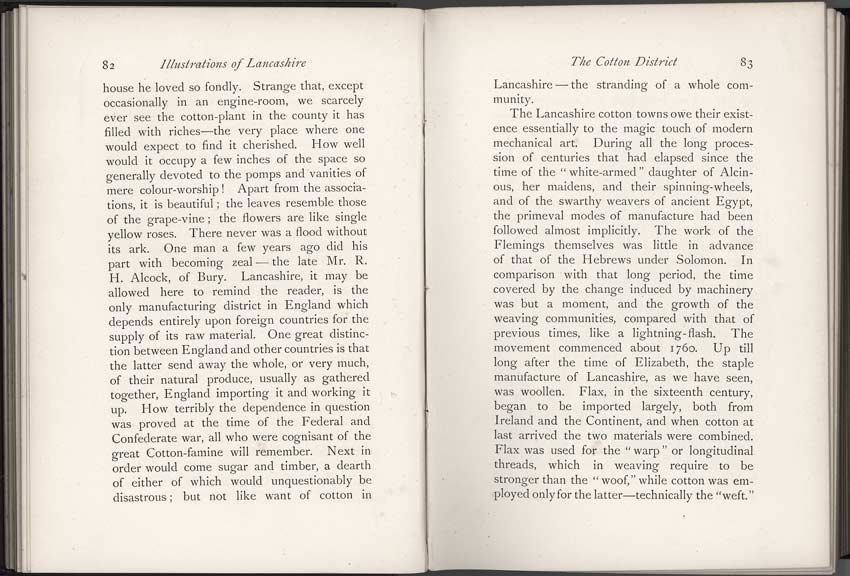
Scan and page transcript from:
LANCASHIRE - Brief Historical and Descriptive Notes
by Leo H. Grindon
Pub. 1892
pages 82-83 |
82 Illustrations of Lancashire house he loved so fondly. Strange that, except occasionally in an engine-room, we scarcely ever see the cotton-plant in the county it has filled with riches - the very place where one would expect to find it cherished. How well would it occupy a few inches of the space so generally devoted to the pomps and vanities of mere colour-worship! Apart from the associations, it is beautiful; the leaves resemble those of the grape-vine; the flowers are like single yellow roses. There never was a flood without its ark. One man a few years ago did his part with becoming zeal - the late Mr. R. H. Alcock, of Bury. Lancashire, it may be allowed here to remind the reader, is the only manufacturing district in England which depends entirely upon foreign countries for the supply of its raw material. One great distinction between England and other countries is that the latter send away the whole, or very much, of their natural produce, usually as gathered together, England importing it and working it up. How terribly the dependence in question was proved at the time of the Federal and Confederate war, all who were cognisant of the great Cotton-famine will remember. Next in order would come sugar and timber, a dearth of either of which would unquestionably be disastrous; but not like want of cotton in |
The Cotton District 83 Lancashire - the stranding of a whole community. |
